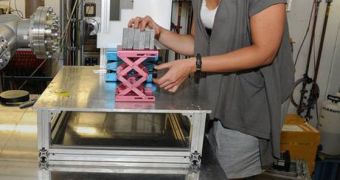One of the main problems that remain to be solved before we can send astronauts on long-term space exploration mission is that of cosmic radiation. The surfaces of Mars and the Moon are bathed in the stuff, but German researchers are currently investigating a solution that may help.
Scientists based at the GSI Helmholtz Center for Heavy Ion Research, in Darmstadt, say that using regolith to build shelters on either of the two celestial bodies could prove to be an efficient, low-cost way of protecting space explorers.
Regolith is the term used by scientists to describe the soil on other celestial bodies. Working under guidance from the European Space Agency (ESA), the German team is trying to determine whether lining buildings in future lunar or Martian settlements with regolith will be effective or not.
The goal is to protect explorers from radiations, because the Martian atmosphere is very thin, and the one around the Moon is virtually non-existent. This means that both bodies provide only minimal protection against the cancer-causing radiations.
GSI biophysics experiment manager, Chiara La Tessa, explains that it would be unfeasible and impractical to carry high-tech materials from Earth to Mars or the Moon, and that other solutions need to be found to make building shelters a lot easier.
“In space travels every gram counts. Transporting building material through space would lead to a cost explosion. That is why ground stations would basically be built from Moon and Mars regolith – especially the shielding,” she explains.
“We know from the analyses done by rovers what the local sand and stones consist of. With this information one can produce Moon and Mars regolith on Earth and we test it for its properties,” the investigator goes on to say.
Cosmic rays can be simulated inside particle accelerators, since they are basically just ions that were heavily accelerated by stellar explosions. Therefore, all the ingredients needed for accurate experiments are available for use.
“I cannot estimate how the material is going to react to the radiation yet. Will many neutrons be produced? How many fast and how many slow ones? This we will know when we analyzed our experiment data,” La Tessa concludes.

 14 DAY TRIAL //
14 DAY TRIAL //